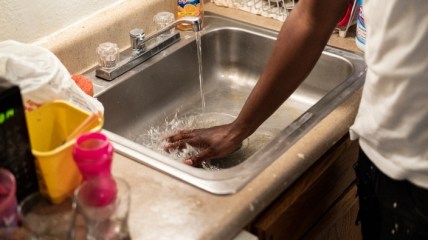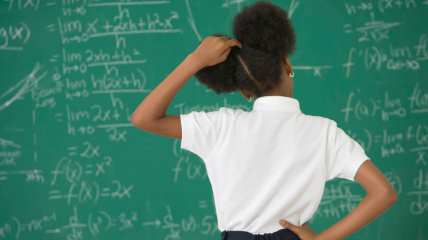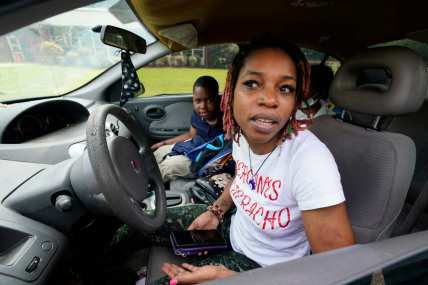Remote learning during disasters worsens learning disruption COVID started
Schools are relying on online classes when communities face their most trying times — disasters like wildfires, storms or a lack of water. And experts say it’s not a sustainable solution.
When a water crisis forced schools back online in Jackson, Mississippi, fifth-grade teacher Ryan Johnson saw reminders everywhere of pandemic times.
Two and a half years after schools switched to remote learning for COVID-19, he once again logged into online learning to see kids lying in bed at home while tuning in for his classes.
This time, Johnson also had to assist his young daughter, who was stuck at home trying to keep up with second grade. She asked repeatedly when she could go back to school.
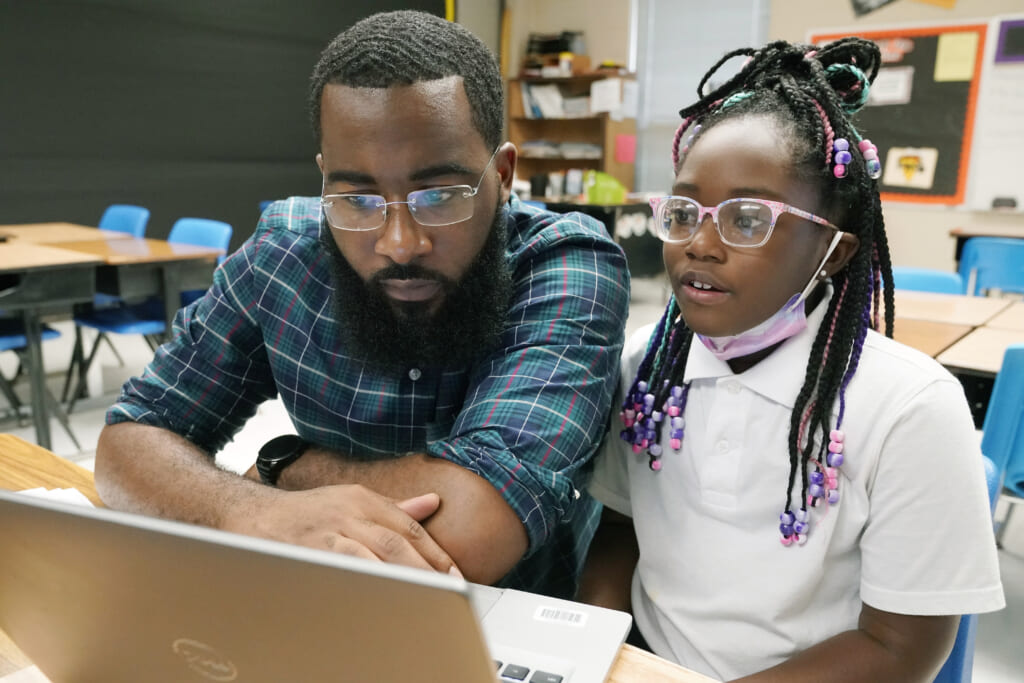
The stint in remote learning was short-lived for the 20,000-student school system in Jackson. But it highlighted an alarming reality: Schools are relying on online classes when communities face their most trying times — disasters like wildfires, storms or a lack of water. And experts say it’s not a sustainable solution.
When Jackson’s troubled water system left the city with dry taps and unflushable toilets for several days, school went online for a week. Enough water pressure was restored last week for children to go back in person, and the boil-water notice was lifted Thursday after nearly seven weeks.
Still, online learning compounded the disruption for children and teachers. Families waited in lines for hours to get water to drink or wash. Back at home, children slogged through internet classes, often with the whole family in the house once again.
Johnson said he did his best to juggle it all and keep his students engaged, drawing on his extended experience from the pandemic, but it was far from perfect.
“You try to look at the glass half full as much as possible,” he said.
There was a time, early in the pandemic, when hopes were high for remote learning. It made snow days obsolete, and some schools experimented with online learning in place of substitute teachers. The potential seemed endless.
But remote learning’s shortcomings have become more clear. The shift to remote learning for COVID-19 left many students behind where they should be academically and added to strains on their mental health.
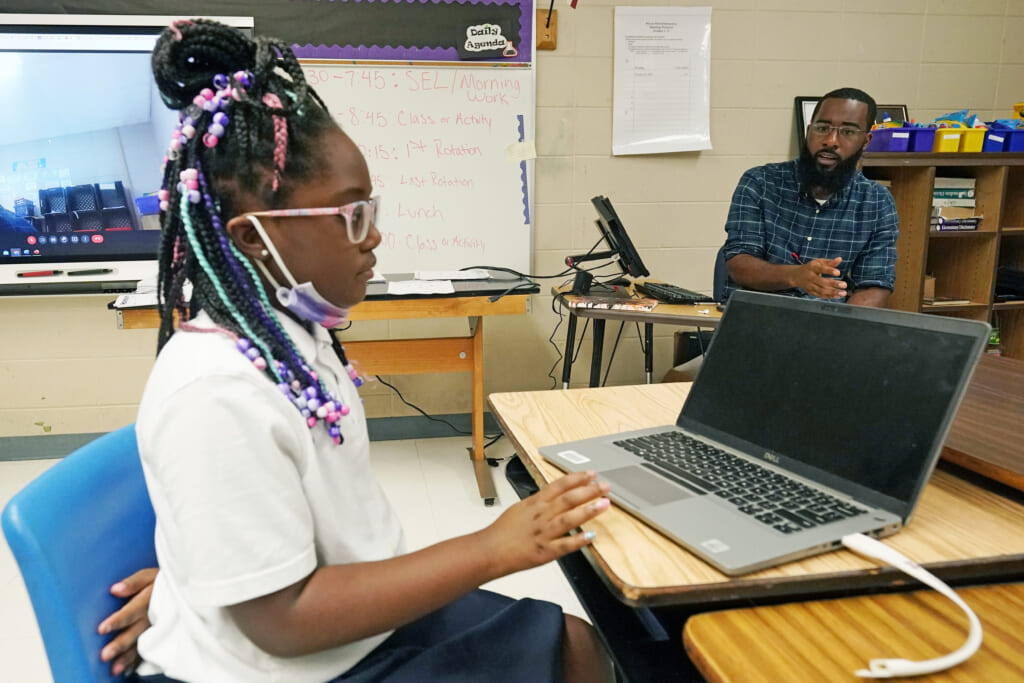
At the same time, it led to increased access to technology and skills that make remote instruction doable on a large scale — an impossibility just four years ago.
In 2018, two hurricanes — Florence and Michael — struck the same regions in North Carolina, causing schools to close. Some students were out of school for weeks. There were attempts at remote learning, but many lacked access to laptops and other technology. Most schools tried to redistribute students to other in-person facilities, said Gary Henry, dean of the University of Delaware’s College of Education and Human Development, who has been part of a long-term research effort studying the impact.
Now, Henry thinks districts will reach first for remote learning. In the short term — a few weeks, perhaps — he thinks it could be a way to keep students on track, but the pandemic showed it’s not a sustainable model.
“I think it will be an automatic response in most places to short-term disruptions in schooling,” he said. “It’s going to be the first reaction, whereas, back during the hurricanes, it was: Where can we get these students in another physical location where they can resume their school experience? Now I think it’s going to be: How can we get organized to provide remote learning?”
Schools in Mora, New Mexico, switched to remote learning last April when the town was evacuated due to a wildfire.
It was a rocky start, Superintendent Marvin MacAuley said. Some of the displaced students and teachers were in evacuation centers, without access to their technology. As time went on, people were able to access computers or tablets and the internet.
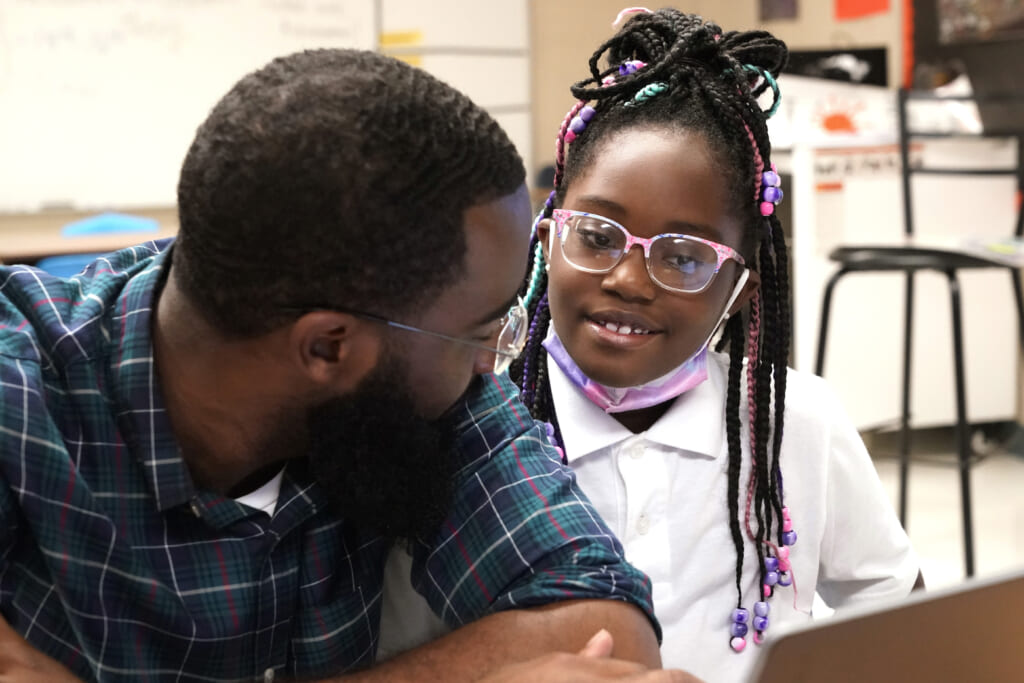
In mid-August, students went back to school, in person, for the first time since the fire. The year started with an emphasis on social-emotional learning, to address the difficulties students have faced. Even with social workers reaching out, MacAuley said it was difficult gauging how students were doing during remote learning.
“When there’s a lot of stuff that has happened, it’s better to have the kids in person so you can see how they are, take note of their behaviors and provide the support to them,” he said.
In Cresskill, New Jersey, after Hurricane Ida hit in 2021, the building housing the high school and middle school was left underwater. The school system had no choice but to start the school year virtually.
“That’s rough,” Superintendent Michael Burke said. “That’s rough for kids for mental health issues. It’s rough for kids for socialization. And it’s hard for parents who have to arrange for someone to be home. You know, and that’s the most frustrating part, is that it came on the heels of COVID. And people were at a breaking point.”
Eventually, Cresskill offered hybrid learning, working with a local church, utilizing its 14 classrooms. Later, in February, the school moved into a neighboring town’s church building, which allowed students to go back every day.
Sarah Barrs’ daughter, who is now a seventh grader, was scheduled to go to orientation the week the storm decimated the school. She said some considered remote learning an adequate solution because they had done it before out of necessity.
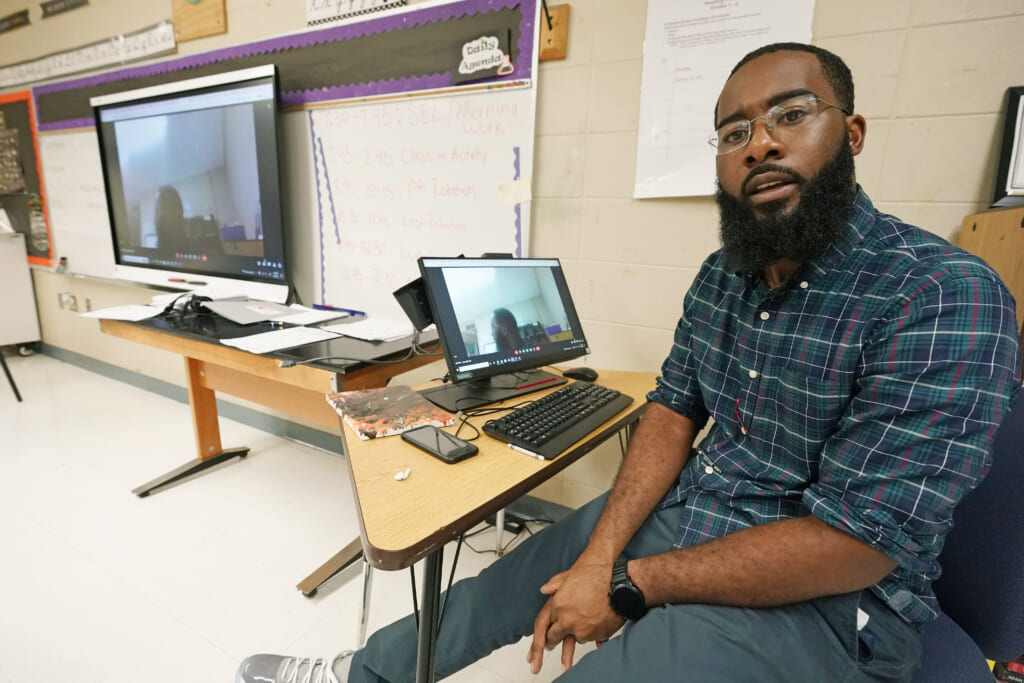
“It’s not school,” she said. “It’s a last resort and it shouldn’t be a crutch that we rely on for school.”
In Jackson, Johnson used his experience from the pandemic to help new teachers at his school when the district moved online during the water crisis. For one, he tried to ensure students had their laptop cameras on, in hopes of keeping them focused. Teachers worked hard last year to help students catch up, he said, and he worried about the potential effects of another extended closure.
As the water pressure came back, the school system bused some students and teachers to alternate sites to bring them back to in-person instruction as quickly as possible.
“It’s certainly not our first option,” said Sherwin Johnson, a spokesman for Jackson Public Schools. “Having them not learning at all, which would be the other option, is unacceptable.”
TheGrio is FREE on your TV via Apple TV, Amazon Fire, Roku, and Android TV. Please download theGrio mobile apps today!
